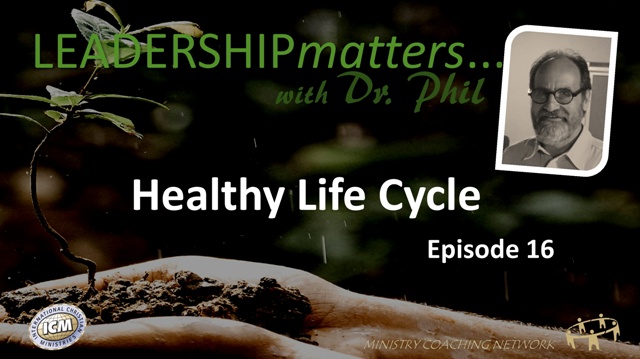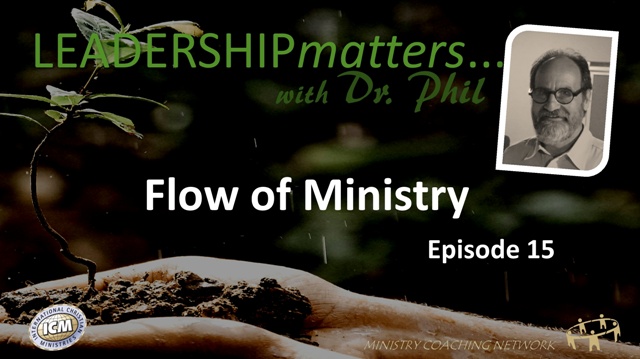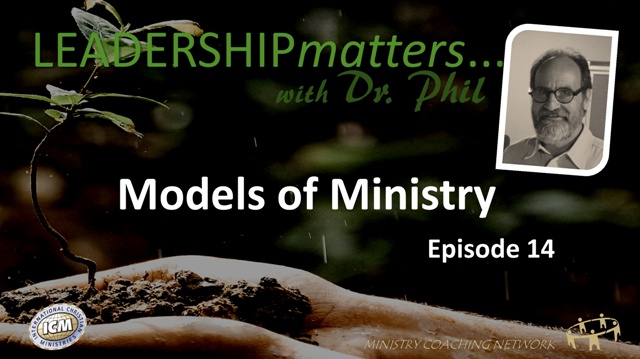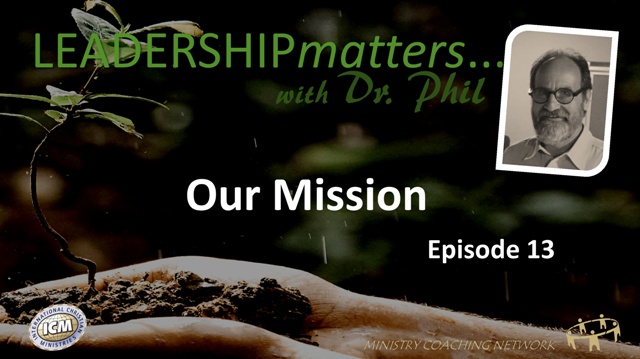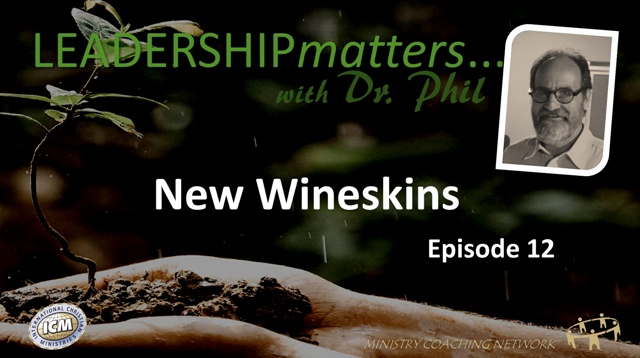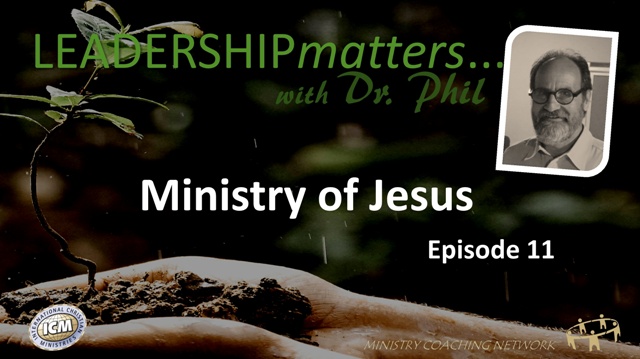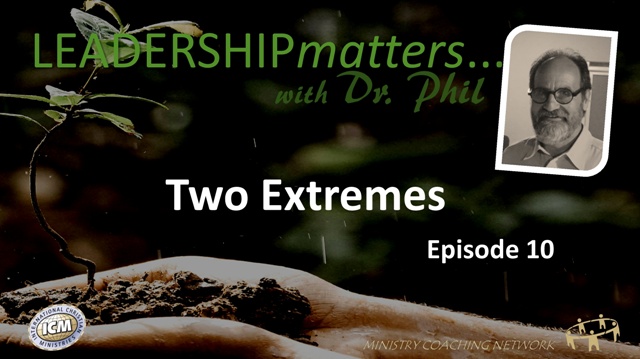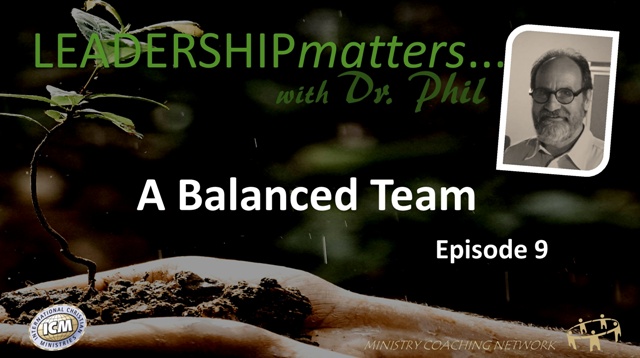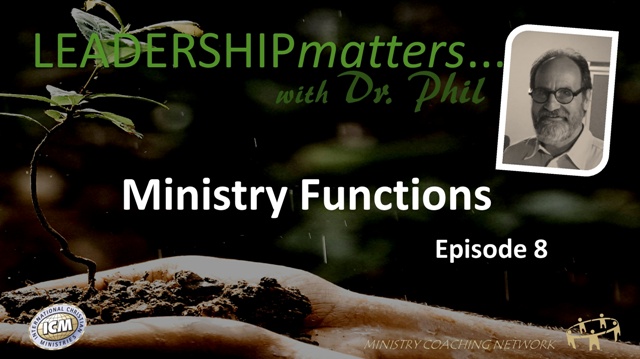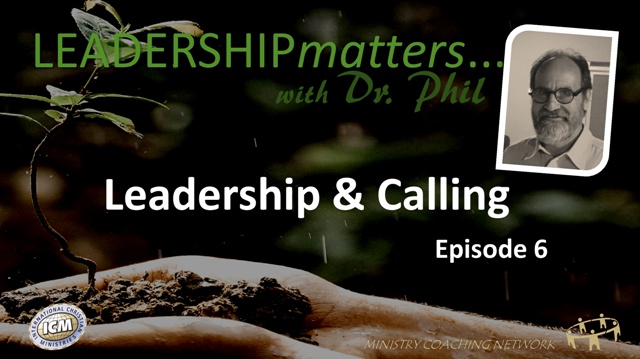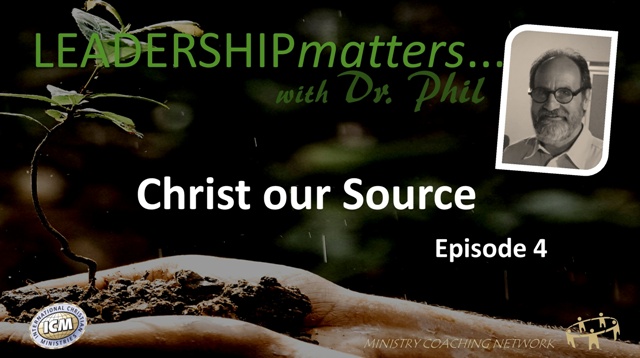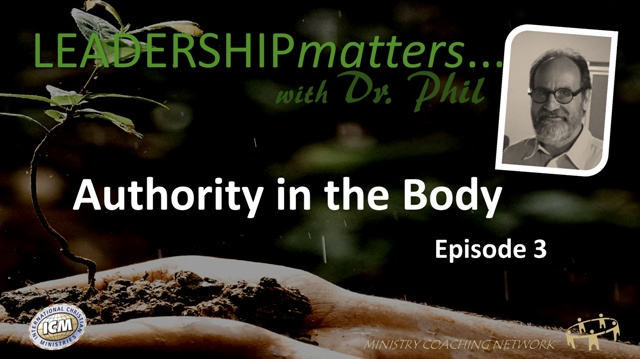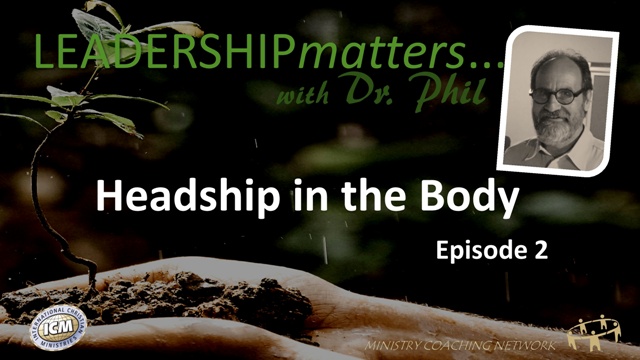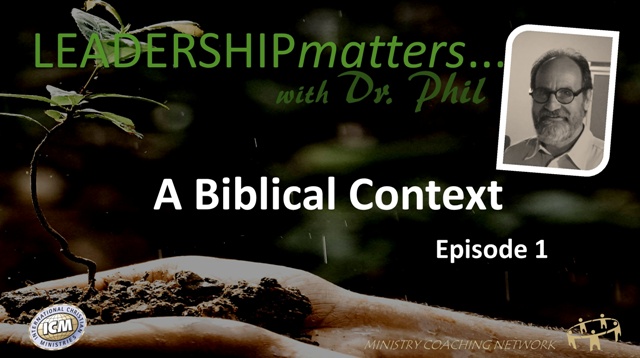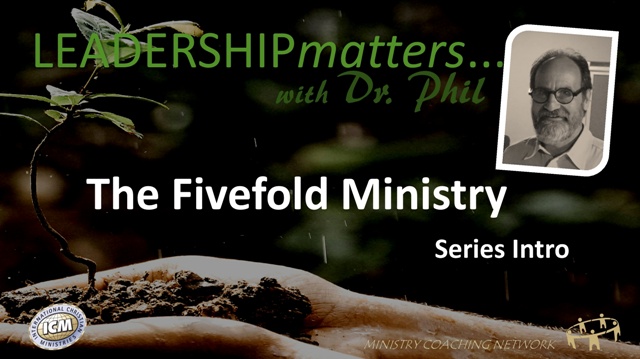Description
In our last episode we were using the Ministry Flow Chart to identifying ministry balance in our church. In this final episode we will look at another tool, the Organizational Life Cycle. Every organization is like a living organism, it has a birth, life and eventually it can also come to an end. How can an understanding of the fivefold functions help us identify what stage our church is at and the steps that may need to be taken in order that we don’t decline?
If you find the content of this episode useful, it would really help us reach more people if you click the Like and Subscribe for this episode on Youtube.
Check out our full list of The Fivefold Ministry Podcasts
To view all of our series, visit our LEADERSHIPmatters Podcast page.
Podcast Resources
Listeners of our LEADERSHIPmatters podcasts have exclusive access to our free bonus leadership materials. For this series these include Fivefold Functions: Personal Survey, Fivefold Functions: Team Unity, Fivefold Functions: Organizational Flow Chart, Fivefold Functions: Organizational Life Cycle.
Get exclusive access to free Resources or download Workbook
For other valuable leadership resources
Consider Helping
The majority of our work training new leaders in the church is international. In many cases, they cannot afford the material themselves. Please considering helping us reach those who can’t afford the resources by donating today.
If you can’t donate, you can still help by visiting our channel on Youtube and clicking Subscribe to tell Youtube that you value our content and they should show it to others like yourself!
Video Script
Episode 16: The Life Cycle
In our last episode we were using the Ministry Flow Chart to identifying ministry balance in our church. In this final episode we will look at another tool, the Organizational Life Cycle. Every organization is like a living organism, it has a birth, life and eventually it can also come to an end. How can an understanding of the fivefold functions help us identify what stage our church is at and the steps that may need to be taken in order that we don’t decline?
Organizational Life Cycle and Fivefold Ministry
Another way of viewing the fivefold gifts is through the lens of an Organizational Life Cycle. This and the Flow Chart are included as part of our MCNet CHEA, Church Health Evaluation and Assessment which you can download from our website, icmcanada.org. A shorter version is included here in the Resource Section of this workbook. If you are following along, we are now on pages 57-60.
The Life Cycle chart is a way of tracing the beginnings of an organization from inception to maturity and possible decline. Bullard suggests that there are four organizing principles from the DNA of a life cycle of an organization that can be applied to the church. These are Vision, Relationships, Programs, and Management. Vision is the current understanding of God’s strategic direction cast by leadership and owned by members. Relationships refers to the processes by which people are converted, assimilated, grow spiritually, utilize gifts, and develop as leaders. Programs refers to those activities and ministries that serve the church and Management is the administration of the physical resources, but also includes decision making, changing culture, and systems. It’s important to remember these definitions as we go through this.
As you can see from the diagram, in each stage there is a different emphasis and need. This is represented by the Capitalization of each letter, VRPM – Vision, Relationship, Program, Management –during each stage of development. For example during the birthing stage, Vision is most emphasized and important. As the church develops healthy relationships, the letter “R,” ministries are established and grow. As the church matures, effective programs that meet the needs of the Body are functioning, letter “P.” Eventually, healthy administration allowing for reproducing ministry and evaluating the organization, the letter “M”. However, the decline of the organization occurs if we focus on our past successes and fail to recast new vision. When vision starts to go, most people in the church or organization do not recognize the decline at this point. Things are still humming along pretty good, we are living off of all the successes in the past.
But as the organization ages, contentment invariably leads to a loss of vision and this eventually leads to a breakdown in Relationships, which means outreach slows and members no longer are growing. This is when people become discontent and notice that something has changed. If intentional steps to move the organization to a new life cycle are not taken at this stage of Atrophy, the death of the church or organization is inevitable. This does not mean the doors close, there can still be many programs and many systems are still there that were put in place during the church’s glory days . However, there is a loss of vision and purpose. Okay, I don’t have time here to get into this in too much detail here, if you want a fuller explanation, you can check out our Coaching Guide for team leaders or order our materials on this topic.
But for our purposes here, I would like to use a hybrid of this tool from some of Hirsch’s research. This can help us identify deficiencies in the fivefold functions by determining where the organization is on its life cycle. So let’s look at the same graph through this lens. The fundamental question regarding the fivefold ministry functions are which are needed along each stage of the life cycle? Identifying what stage our ministry is at will help us recognize where we are lacking in our fivefold ministry mix. The top of the curve of the graph indicates a healthy mature church, which is identified by looking at the four indicators of Vision, Relationships, Programs, Management, which I just briefly explained. Viewing the graph through the lens of the fivefold approach, it would make sense that at this stage of maturity all five of the equipping gifts are functioning in balance as is seen in Ephesians 4.
To get to this Mature-Adulthood Stage, at some time in the past the church began with a visionary, or a group with a vision. At the Birth stage vision is crucial, most typically accomplished by those who have apostolic giftings. The early vision stage nearly always is initiated and carried out by entrepreneurs and risk takers, they see a need and how to meet that need. This early stages also often includes those who see God’s heart and are passionate about sharing it with others. In this early stage there are also usually those with more prophetic giftings, those risk-takers, analytic strategizers, and out-of-the-box thinkers.
If the church is going to continue to grow beyond its relational base, it will be essential that those with evangelistic giftings are released to engage with the community and mobilize others in the fledgling body to join them as typically will happen in the Early Development Stage. These are the communicators who have the gifting to network people and gather others. As the believing community grows, for it to come to full maturity —the top of the graph—member’s needs will need to be met, which will require pastoral giftings. This, together with the teaching giftings will enable personal and organizational growth and reproducibility. At each stage of the life cycle, different equipping functions are needed to move it to the next level of maturity and growth. When all of these are functioning in balance, the church is at the top of the cycle; healthy, mature, and growing in depth and breadth.
However, churches and all organizations do not remain healthy left on their own. Left to themselves, they often become complacent, ingrown and self-satisfied, we have elsewhere illustrated this as the “hardening of the wineskin.” This is likely a function of human nature, but needs to be guarded against. This begins with the initial loss of vision or missiondrift as the organization loses its purpose and reason to exist. What often happens is that its mere existence becomes the purpose. The organization and leaders begin to rely on patterns of the past and previous solutions to solve new problems, which inevitably leads to the Aging Stage. The more successful a church or organization has been, the greater the tendency to rest on its past success, which leads to a quicker decline.
Without constant attention, ensuring that all of the fivefold ministry gifts are allowed to function, every church will become out of balance which, unfortunately, usually results in its decline. Once atrophy begins to set in, there may still be good relationships and teaching, after all structures have been developed to maintain these. In other words the pastoral and teaching gifts are still functioning. However, typically one or more of the fivefold functions are no longer present. The Atrophy Stage of organizational maintenance means that the apostolic, prophetic, or evangelistic gifts are no longer functioning.
By this point, the innovators and disrupters have typically become sidelined as the new value of the group is to ensure that all of the “success” that they had once achieved is maintained. Change has become a bad word in the culture of the group. At this stage of the church or organization you begin to hear a phrase that you never used to hear in the past. When people come up with new ideas you’ll begin to hear, “Well, we have never done it like that before.” Once you start hearing that phrase, you know the handwriting is on the wall. In this scenario , the apostolic, visionary entrepreneurs are sidelined; prophetic voices no longer speak truth to the organization, and the evangelistic gifting is constrained so as to not attract all sorts of “undesirables” who may mess up the new carpet in the church. Death of the church at this point is usually inevitable.
How does viewing the Life Cycle through the lens of the fivefold functions affect your perception of the health of your church and organization?
Fivefold Approach to a Healthy Church
By using the Flow Chart and Life Cycle we can indentify how the fivefold ministry gifts are indicators of a healthy church. “Health” being defined as a maturing community that is able to reproduce its ministry throughout the community. It is a ministry that is fulfilling its calling as part of God’s mission. Regardless of the church tradition, from Catholic, to Protestant, to Evangelical, to Pentecostals, and every variation in between, I believe that without a fivefold ministry approach, the church will not be healthy and will not be able to grow and reproduce. This is amplified if there is a culture of a clergy/laity divide. It is not enough to just ascribe to the theology of the priesthood of all believers, we must develop ministry structures that facilitate all believers being equipped to do works of the ministry.
Examples of this divide are not hard to find. In the Catholic tradition the sacraments can only be administered by the priest, while mainline Protestantism modified this to include only those who were “ordained.” As we have seen, the Western Reformation did very little to reform these structures. A new form of clericalism and religious sacraments were established that became as entrenched as the those from the ecclesiastical tradition they came from. Even in current Evangelicalism, “church” has come to mean attending a certain building on Sunday, from which the sacraments/ordinances are dispensed from an ordained, professional clergy. In light of this, it is no surprise that the church has become identified as a place, not a people who are on a mission.
In the last couple episodes we have been looking at two tools that can help us identify our effectiveness or the health of our ministries. Yet in order to implement this new approach, we need to develop new wineskins that will enable the functioning of this new vision (wine). Without new structures, we tend to revert back to old patterns, usually in the form of a reductionist approach of only two or three of the fivefold functions. In developing new “wineskins,” it is important to remember that these fivefold functions are not offices or positions. The goal is not to create a new structure of the church based on five positions rather than the one pastoral one.
Due to many factors that have developed over hundreds of years, as well as existing denominational policies, typical church governance structures, and so on, it is not likely that church structure is going to see widespread change any time soon. Call me a realist, I guess. But at the same time, I am not really pessimistic. We may not be able to change the whole world, but we can change our world. I am suggesting that in order to have a balanced ministry we do need to think of ways that we can incorporate a fivefold approach in our teams and our local churches in order to fulfill the mission of the Church. Ultimately, we have the promise that Jesus will build his Church. As I have presented in this series, I believe that as we allow the fivefold gifts to function we will be better partners with Jesus as he builds his Church.
It seems from Scripture that the fivefold gifts were expected to function in the early church. What is not quite so clear is a definitive structure as to how to best implement them. This ambiguity of application, seems to indicate to me that Jesus is wanting us to seek to be connected to him, the Originator and Source of the Church. All ministry flows out of a relationship with Him. It is not just about the task, but about a relationship he seeks with us. He wants to see each member, all of us, grow up and be equipped, so that we can be his hands and feet in this world. I think it also indicates the need for flexibility in how we apply these principles within our own time and our own context.
How can the use and implementation of the Life Cycle Chart help us maintain a healthy, balanced church or organization? Spend some time with your team discussing this.
I hope this study has been helpful as you partner together with the Lord of the Church in developing healthy ministries that will reach into our hurting world. As I have outlined here, I believe that the most effective way we can accomplish this is by releasing his fivefold ministry to function freely in and through his Body, empowered by his Spirit. What a privilege and opportunity to partner together with Him as we make disciples of all peoples.









